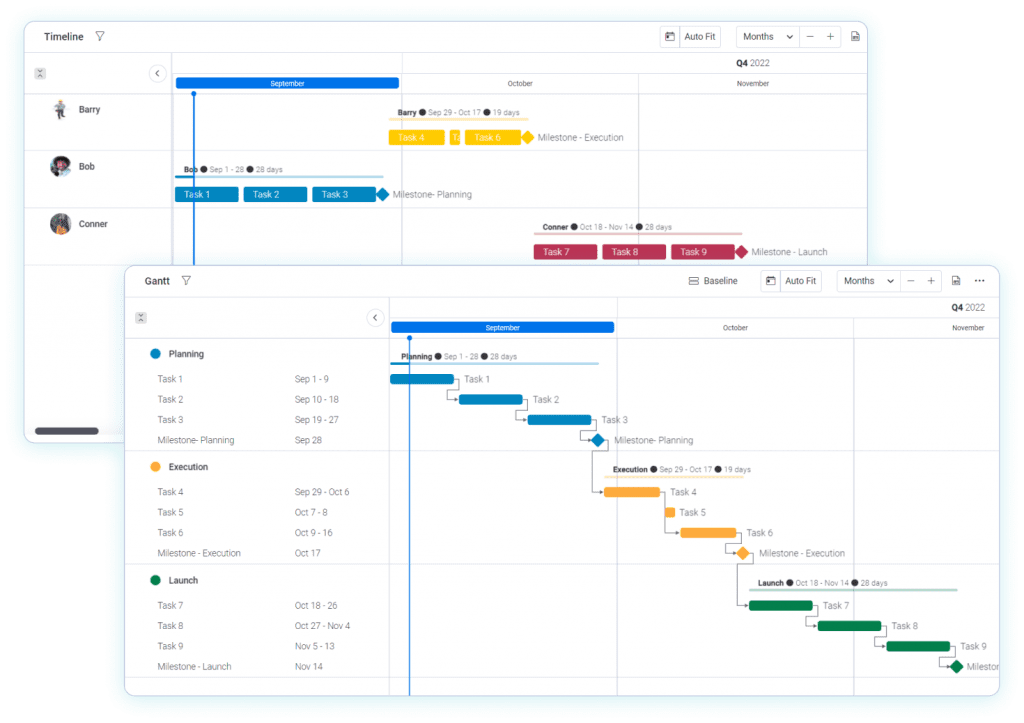DD #34 – Roadmaps 101
Welcome to the latest edition of the Digital Directive, Edition #33! We hope you’ve been enjoying our previous newsletters, and we’re excited to share some more great content with you this week.
Did you notice the last two came to you on Tuesdays? We’re experimenting with sending days & times, so be sure to share your feedback with us!
In this edition, we’ll build on our previous directive about company roadmaps and explore some key considerations for creating a successful roadmap for your project or business.
If you haven’t already read Edition #29 – Roadmaps? Road Trip!, we highly recommend it. Anyways, let’s dive in!

5 Essentials to every Roadmap
Clear goals & objectives – The roadmap should clearly outline the goals and objectives of the project or company. This includes defining what success looks like, identifying the target audience, and establishing key performance indicators (KPIs) to measure progress.
Realistic timelines – The roadmap should include realistic timelines for each project or company’s development stage. This means considering factors such as resource availability, potential setbacks or delays, and the project’s complexity.
Prioritization of tasks – Prioritizing tasks in the roadmap is important to ensure that the most critical activities are completed first. This helps to ensure that the project stays on track and that progress is made toward achieving the overall goals and objectives.
Flexibility & adaptability – While having a clear plan in place is important, baking in flexibility and adaptability is essential. This means being able to pivot or adjust the plan if new information or opportunities arise or if the project encounters unexpected challenges.
Communication and collaboration – The roadmap should facilitate cross-team communication and collaboration throughout the organization and among stakeholders. This includes ensuring that everyone is clear on the project’s goals, objectives, and timelines and providing regular updates on progress and any changes to the plan.
By considering these essentials, you’ll ensure your roadmap is well-defined, achievable, and responsive to the project’s needs and stakeholders involved.

“What could possibly go wrong?!”
A better question might be, what issues could arise if a roadmap is not adequately designed or executed?
Lack of clarity – A roadmap that is not clearly defined can lead to confusion and misunderstandings among team members and stakeholders. This can result in delays, missed deadlines, and project failure.
Unrealistic timelines – A roadmap that includes unrealistic timelines or milestones can lead to unrealistic expectations and stress among team members. This can also result in burnout and decreased morale, ultimately impacting the project’s success or derailing a company entirely.
Inadequate prioritization – If a roadmap does not prioritize tasks effectively, it can lead to the team focusing on less critical tasks while more important tasks are left incomplete. This can also result in missed deadlines and project failure.
Lack of flexibility – If a roadmap is too rigid and does not allow for changes or adjustments, it can lead to the team being unable to adapt to unexpected challenges or opportunities. This can result in missed opportunities or delays in achieving project goals.
Poor communication – If a roadmap is not effectively communicated to all stakeholders, it can lead to misunderstandings and confusion. This can result in missed deadlines, project failure, and damage to team morale.
You’re probably noticing a theme. If done incorrectly or inadequately, the same pieces that are essential to account for can result in project failure or worse. By being aware of these potential issues, project managers can take steps to address them and ensure that their roadmap is effective and successful.

What’s next? Create & update!
Here’s a quick guide from our 33rd edition for all you current monday users.
Here’s what you need to do on monday:
- First, decide what kind of roadmap you need.
- Second, create a new board. (Need a template? Use this one)
- Next, Outline your different groups. (Think phases, completeness or types, as different ways to segment groups.)
- Then, enter the different core objectives, tasks or desired accomplishments as items.
- Now, use a timeline, or gantt views on the board or in a dashboard to gain your visual roadmap as seen below.

Lastly, be sure to continually update this board, staying true to deadlines, and don’t be afraid to mark something as past/overdue. This helps you learn for the future and understand how to better estimate time down the line.
Keep spreading the word!
If you have questions about apps, wondering the best way to build a workflow, or have ideas for a topic you want to see covered in a future Digital Directive, feel free to share ’em with us!
Have a friend that needs some digital direction? Share this link: https://www.carbonweb.co/digital-directive/?utm_source=digital-directive&utm_medium=referral